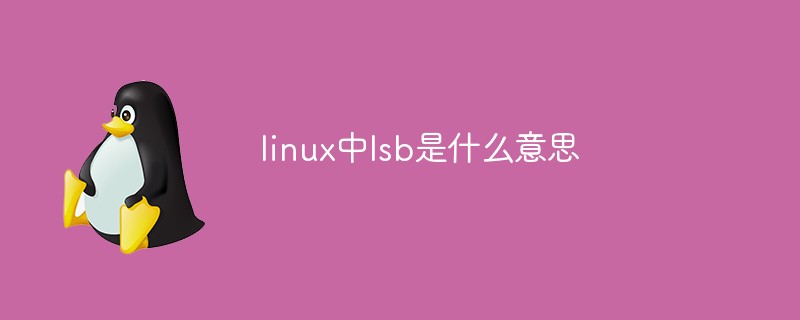 Backend Development
Backend Development C++
C++ Where is the C language function library? How to add the C language function library?
Where is the C language function library? How to add the C language function library?The C language function library is a toolbox containing various functions, which are organized in different library files. Adding a library requires specifying it through the compiler's command line options, for example, the GCC compiler uses the -l option followed by the abbreviation of the library name. If the library file is not under the default search path, you need to use the -L option to specify the library file path. Library can be divided into static libraries and dynamic libraries. Static libraries are directly linked to the program at compile time, while dynamic libraries are loaded at runtime.

C language function library? This question is awesome! Many beginners are confused and think that this thing is like a ghost, invisible and intangible. In fact, it is right next to you, but you just haven't discovered its true face.
First of all, we have to understand that the C language function library is not a separate file, it is more like a huge toolbox, filled with various functions, which are organized in different library files. These library files, usually .a or .so suffix files (static and dynamic libraries), are hidden in your system, and their location depends on your operating system and compiler.
For example, in Linux systems, commonly used library files are usually located in directories such as /usr/lib , /lib or /usr/local/lib . Under Windows, they may be in directories like C:\Program Files\...\lib . You have to know that this is not static. The location of library files may vary greatly for different systems and compilers.
So, instead of trying to find these library files, it is better to tell the compiler where to find it. This is the key to adding a C function library. This is usually achieved through the compiler's command line options.
Take the GCC compiler for example, you can use the -l option to specify the library you need to link to. For example, if you want to use the math function library math.h , you need to add the -lm option in the compile command. Note that m in -lm is the abbreviation of the library name math , not the file name. This is a conventional rule, you have to remember it.
The complete compile command might look like this:
<code class="bash">gcc myprogram.c -lm -o myprogram</code>
Here, myprogram.c is your source code file, -lm tells the compiler to link the math library, -o myprogram specifies the output executable file name.
If you need to link multiple libraries, just list the library names in turn after the -l option, for example:
<code class="bash">gcc myprogram.c -lm -lc -o myprogram</code>
This links the math library and the C standard library ( libc ).
But there is a pit here, and many novices are prone to falling into it: the library file path is incorrect. If your library file is not in the compiler's default search path, you have to tell the compiler the specific location of the library file. This can be achieved with the -L option.
For example, if your library file is located in the /home/user/mylibs directory, then the compilation command should look like this:
<code class="bash">gcc myprogram.c -L/home/user/mylibs -lmylib -o myprogram</code>
Here, -L/home/user/mylibs specifies the search path of the library file, and -lmylib specifies the library name.
Remember, library names are usually names that remove lib prefix and .a or .so suffix. This is easy to confuse, so be careful.
Finally, let me mention a little more about the difference between static libraries and dynamic libraries. The static library will be directly linked to your program at compile time to generate an independent executable file; while the dynamic library will be loaded at runtime, and your program will depend on the dynamic library files that exist in the system. The advantage of dynamic libraries is that they save space, and multiple programs can share the same dynamic library; but the disadvantage is that if the system lacks the necessary dynamic libraries, your program will not run. Which type of library to choose depends on your specific needs. This requires you to have a deeper understanding of the system. In short, the use of C function library is full of details and skills, which requires you to learn and practice continuously to master. Don’t be afraid to make mistakes. Learning from mistakes is the fastest way to make progress.
The above is the detailed content of Where is the C language function library? How to add the C language function library?. For more information, please follow other related articles on the PHP Chinese website!
 什么是linux设备节点Apr 18, 2022 pm 08:10 PM
什么是linux设备节点Apr 18, 2022 pm 08:10 PMlinux设备节点是应用程序和设备驱动程序沟通的一个桥梁;设备节点被创建在“/dev”,是连接内核与用户层的枢纽,相当于硬盘的inode一样的东西,记录了硬件设备的位置和信息。设备节点使用户可以与内核进行硬件的沟通,读写设备以及其他的操作。
 Linux中open和fopen的区别有哪些Apr 29, 2022 pm 06:57 PM
Linux中open和fopen的区别有哪些Apr 29, 2022 pm 06:57 PM区别:1、open是UNIX系统调用函数,而fopen是ANSIC标准中的C语言库函数;2、open的移植性没fopen好;3、fopen只能操纵普通正规文件,而open可以操作普通文件、网络套接字等;4、open无缓冲,fopen有缓冲。
 linux怎么判断pcre是否安装May 09, 2022 pm 04:14 PM
linux怎么判断pcre是否安装May 09, 2022 pm 04:14 PM在linux中,可以利用“rpm -qa pcre”命令判断pcre是否安装;rpm命令专门用于管理各项套件,使用该命令后,若结果中出现pcre的版本信息,则表示pcre已经安装,若没有出现版本信息,则表示没有安装pcre。
 linux中eof是什么May 07, 2022 pm 04:26 PM
linux中eof是什么May 07, 2022 pm 04:26 PM在linux中,eof是自定义终止符,是“END Of File”的缩写;因为是自定义的终止符,所以eof就不是固定的,可以随意的设置别名,linux中按“ctrl+d”就代表eof,eof一般会配合cat命令用于多行文本输出,指文件末尾。
 linux中什么叫端口映射May 09, 2022 pm 01:49 PM
linux中什么叫端口映射May 09, 2022 pm 01:49 PM端口映射又称端口转发,是指将外部主机的IP地址的端口映射到Intranet中的一台计算机,当用户访问外网IP的这个端口时,服务器自动将请求映射到对应局域网内部的机器上;可以通过使用动态或固定的公共网络IP路由ADSL宽带路由器来实现。
 手机远程linux工具有哪些Apr 29, 2022 pm 05:30 PM
手机远程linux工具有哪些Apr 29, 2022 pm 05:30 PM手机远程linux工具有:1、JuiceSSH,是一款功能强大的安卓SSH客户端应用,可直接对linux服务进行管理;2、Termius,可以利用手机来连接Linux服务器;3、Termux,一个强大的远程终端工具;4、向日葵远程控制等等。
 linux怎么查询mac地址Apr 24, 2022 pm 08:01 PM
linux怎么查询mac地址Apr 24, 2022 pm 08:01 PMlinux查询mac地址的方法:1、打开系统,在桌面中点击鼠标右键,选择“打开终端”;2、在终端中,执行“ifconfig”命令,查看输出结果,在输出信息第四行中紧跟“ether”单词后的字符串就是mac地址。
 linux中lsb是什么意思May 07, 2022 pm 05:08 PM
linux中lsb是什么意思May 07, 2022 pm 05:08 PMlinux中,lsb是linux标准基础的意思,是“Linux Standards Base”的缩写,是linux标准化领域中的标准;lsb制定了应用程序与运行环境之间的二进制接口,保证了linux发行版与linux应用程序之间的良好结合。


Hot AI Tools

Undresser.AI Undress
AI-powered app for creating realistic nude photos

AI Clothes Remover
Online AI tool for removing clothes from photos.

Undress AI Tool
Undress images for free

Clothoff.io
AI clothes remover

AI Hentai Generator
Generate AI Hentai for free.

Hot Article

Hot Tools

Dreamweaver Mac version
Visual web development tools

DVWA
Damn Vulnerable Web App (DVWA) is a PHP/MySQL web application that is very vulnerable. Its main goals are to be an aid for security professionals to test their skills and tools in a legal environment, to help web developers better understand the process of securing web applications, and to help teachers/students teach/learn in a classroom environment Web application security. The goal of DVWA is to practice some of the most common web vulnerabilities through a simple and straightforward interface, with varying degrees of difficulty. Please note that this software

Dreamweaver CS6
Visual web development tools

EditPlus Chinese cracked version
Small size, syntax highlighting, does not support code prompt function

SublimeText3 Linux new version
SublimeText3 Linux latest version




